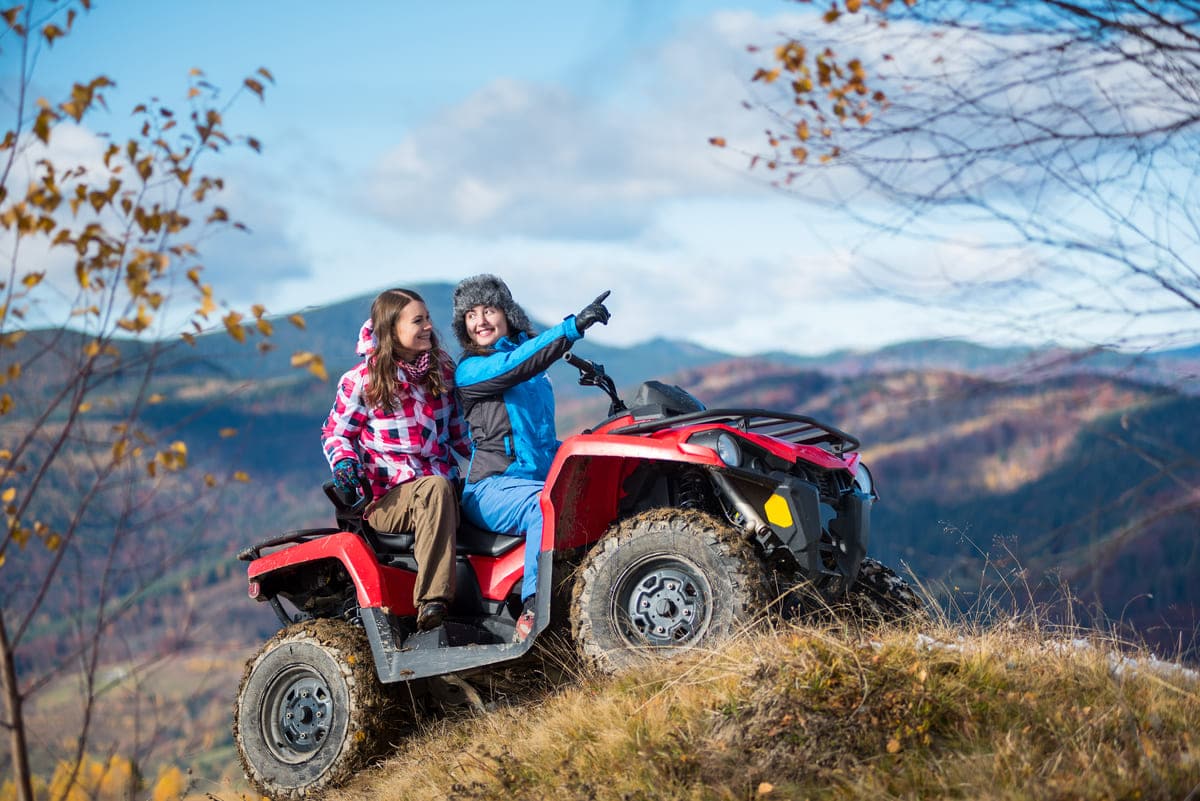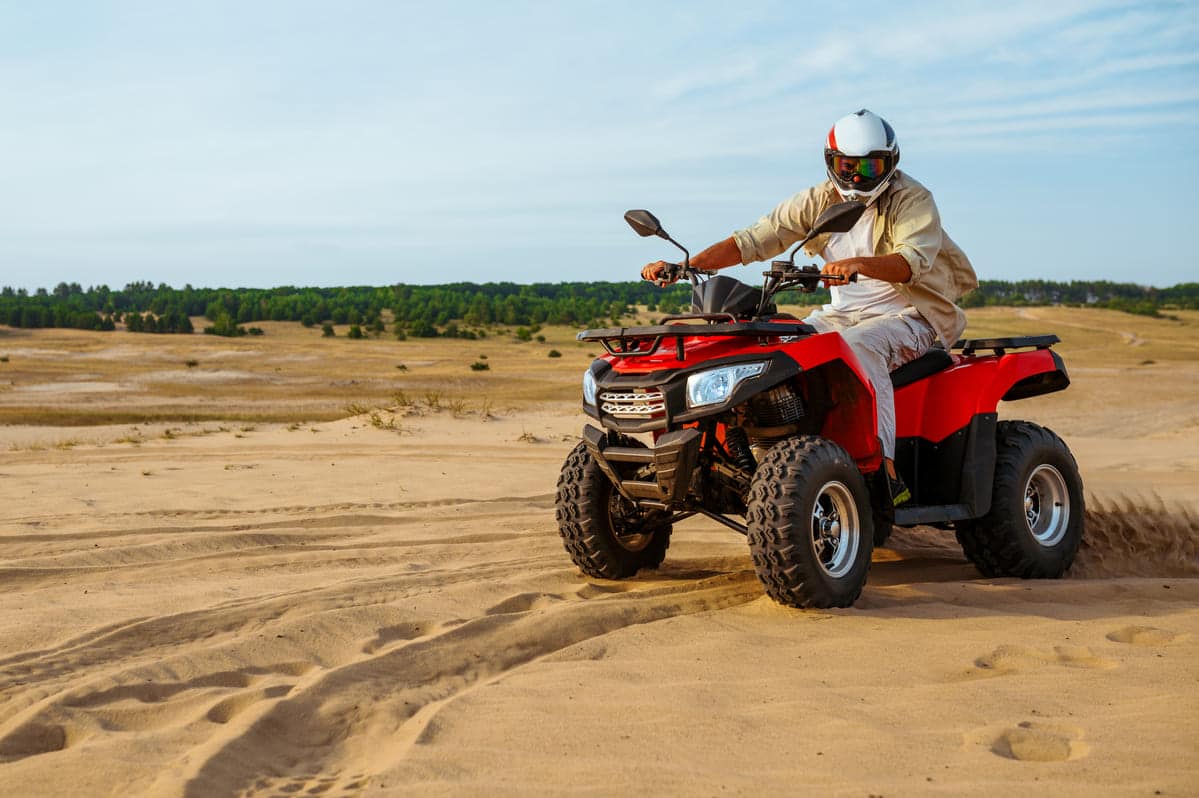An all-terrain vehicle is a powerful machine used in many environments, from farm to wilderness. They are useful for farming, hunting and forest patrol, and for enthusiasts who want adventure through off road sports and exploration.
What is an All-terrain vehicle?
An all-terrain vehicle or ATV is a small, open motorised vehicle with 3 or 4 wheels. Also known as quad, quad bike or light utility vehicle (LUV). You control it with handlebars like a bicycle. ATVs can go through mud, sand and rocky trails.
They are for fun rides and work tasks. People use them on farms, in forests and during off road adventures. They are strong and can go where cars can’t. Kids and adults use ATVs for exploring and having fun in nature.
References
- All-terrain vehicle. Merriam-Webster. Retrieved from
- All-terrain Vehicle. ScienceDirect. Retrieved from https://www.sciencedirect.com/topics/earth-and-planetary-sciences/all-terrain-vehicle
- All-terrain vehicle. Cambridge Dictionary. Retrieved from
What is the History of All-terrain vehicle?
The history of all-terrain vehicles (ATVs) started in 1893 when Royal Enfield created the first powered four wheeler. In the 1960s six wheeled amphibious ATVs like the Jiger became popular.
The first three wheeled ATV was the Tricart invented in 1967. In 1969 Honda launched its three wheeled model, the US90. It was known as the ATC and was featured in movies and TV shows. By the 1980s Honda was the dominant player with models like the ATC250R.
But concerns stopped manufacturers from producing three wheelers in 1987. Four wheeled ATVs like Suzuki’s 1982 QuadRunner soon took over.
References
- All-terrain vehicle: History. Retrieved from
- All-Terrain Vehicle (ATV). CarBikeTech. Retrieved from
What are the Major Parts of a Quad Bikes?
Quad bikes or ATVs are fun machines for adventure and work. They have special parts that can go through mud, sand and rocks. Knowing these parts can help you understand how quad bikes work and how to maintain them.
Here are the main parts of a quad bike:
- Handlebars
- Seat
- Wheels and Tires
- Brakes
- Throttle
- Exhaust
Each of these parts is important in making a quad bike work and have a fun and safe ride.

What is an ATV Used For?
All-terrain vehicles (ATVs) are powerful and reliable machines for various tasks and adventures. They can handle different types of terrain making them popular in both recreational and practical uses.
Recreational Riding: Many use ATVs for fun and exploration in nature. They ride on trails through forests, over hills and across beaches. ATVs give riders a thrill by allowing them to go places where regular vehicles can’t. These can be solo or with a group, a great way to enjoy the outdoors and discover new paths.
Agricultural Work: Farmers use ATVs to manage big fields. These vehicles help in transporting materials such as tools, seeds and animal feed across farms. They save time and effort by allowing quick movement on uneven ground. ATVs are perfect for tasks like checking fences, herding livestock and accessing remote areas of the farm.
Hunting and Wildlife Management: Hunters use ATVs to reach remote hunting grounds that are hard to access by foot or . These vehicles help in carrying gear, game and supplies. Wildlife officers also use ATVs for patrolling large areas to monitor animal population and enforce regulations. Their off-road capability makes them ideal for navigating forests and rough terrain.
Rescue and Emergency Services: In emergencies, responders use ATVs to reach areas that are inaccessible by bigger vehicles. They are crucial in rescue missions in forests, mountains and disaster hit areas. ATVs can quickly transport medical supplies, personnel and injured people. Their off-road capability makes them a lifesaver.
Tourism and Adventure Sports: ATVs attract tourists looking for adventure. Many places offer guided ATV tours, allowing visitors to see natural wonders. These tours are safe and exciting way to see beautiful landscapes. In adventure sports, ATVs are used for racing and competitive events, to show off their speed and agility on challenging courses.
References
- All-terrain vehicle. Retrieved from
What is the Difference Between ATV & UTV?
ATVs (All-Terrain Vehicles) and UTVs (Utility Task Vehicles) are both off-road vehicles but they serve different purposes and have different features. Knowing the difference helps in choosing the right vehicle for your needs.
| Feature | ATV | UTV |
|---|---|---|
| Design | Single rider, straddled seat | Side-by-side seating |
| Steering | Handlebars | |
| Usage | Recreation and sport | Work, hauling, and recreation |
| Capacity | Usually one rider | Can carry multiple passengers |
| Cargo Space | Limited | Larger, with storage areas |
| Protection | Minimal | Roll cage and sometimes a |
ATVs are light and great for solo rides, UTVs have more space and protection for work and group adventures.
References
- ATV vs. UTV: What’s the Difference?. Retrieved from
- ATV vs. SxS/UTV. Polaris. Retrieved from https://www.polaris.com/en-us/off-road/articles/buying-guides/atv-vs-sxs-utv/


